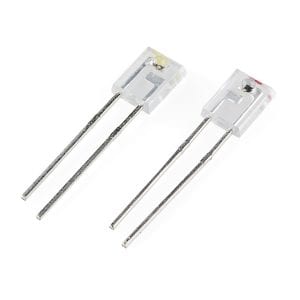Generally speaking, there are TWO types of infrared sensors: Passive Infrared Sensor (PIR) and Active Infrared Sensors (AIR)
Passive Infrared Sensor (PIR)
A passive IR sensor’s functionality is to “realize that everything”, such as humans, animals, even inanimate objects that emit a certain amount of IR radiation. How much IR radiation they emit relates to the body or object’s warmth and material makeup.
The PIRs can be found in security alarms and automatic lighting setups. These applications don’t require that the sensor detect an object’s specific location, just that objects or people in a particular area are moving around.
How does it work
Passive IR (PIR) sensors use a pair of pyroelectric sensors to detect heat energy in the surrounding environment. These two sensors sit beside each other, and when the signal differential between the two sensors changes (if a person enters the room, for example), the sensor will engage. That may mean it triggers an alarm, notifies authorities, or maybe turns on a floodlight.
Sample Sensors
Thermometer: Infrared thermometer https://www.sparkfun.com/products/9570.
Thermal Image: FLIR https://www.sparkfun.com/products/15183.
Motion Sensor: PIR Motion Sensor https://www.sparkfun.com/products/13285.
IR (Infrared) Receiver Sensor: https://www.adafruit.com/product/157
Miniature Reflective Infrared Optical Sensors: https://www.adafruit.com/product/3930
Technical Description
The infrared detector consists of a photodiode. When it is exposed to light, the energy of the photons will be transferred to atoms and thus create more free electrons. The resistance therefore changes as well as the output voltage in proportion to the magnitude of the IR light.
Limitation
Infrared sensors are vulnerable to thermal noise and therefore need to be used in thermal equilibrium and isothermal conditions.
Skill
Competent
Sample Exercise:
https://learn.adafruit.com/ir-sensor/overview
Reference:
https://www.arrow.com/en/research-and-events/articles/understanding-active-and-passive-infrared-sensorshttp://www.glolab.com/pirparts/infrared.html

